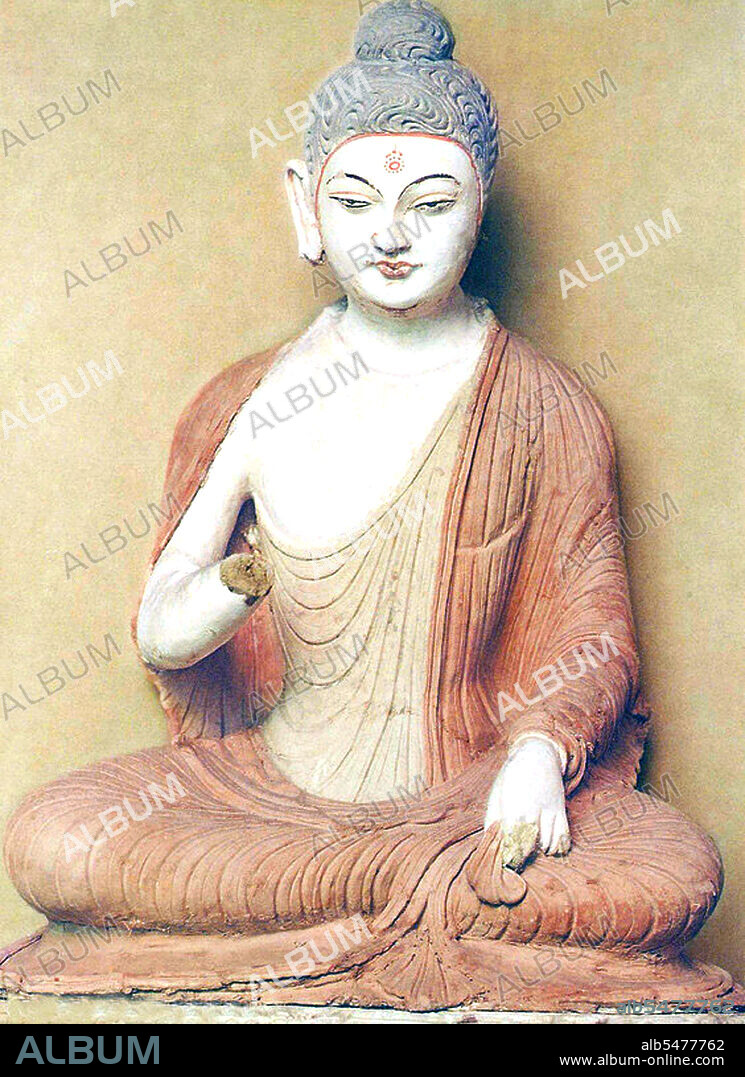alb5477762
Shorchuk, Xinjiang, seated Buddha, Xinjiang.

|
Añadir a otro lightbox |
|
Añadir a otro lightbox |



¿Ya tienes cuenta? Iniciar sesión
¿No tienes cuenta? Regístrate
Compra esta imagen.
Selecciona el uso:

Título:
Shorchuk, Xinjiang, seated Buddha, Xinjiang.
Descripción:
Ver traducción automática
The Qigexing Buddhist Temple Ruins (Uyghur: Xorqua, Chinese: Qige Xing Fusu Yizha; literally 'Seven-Stars Buddhist Temple Ruins') is a ruined compound of Buddhist religious sites located about 25-30 km southwest of the town of Yanqi, Yanqi Hui Autonomous County, Xinjiang, China. Qigexing was part of the ancient Buddhist Karashara Kingdom that is first mentioned in Chinese sources from the Han Dynasty as the Kingdom of Yanqi. In 94 CE, Qigexing was conquered by the Han Dynasty in its reconquest of the Tarim Basin. The Buddhist monk Faxian visited Qigexing around 400 CE and mentions the presence of about 4,000 monks who were practicing Theravada Buddhism. The monk Xuanzang, who lived in the 7th century CE, reports the existence of 10 Buddhist monasteries with 2,000 monks in Qigexing. In 719 CE, the Tang Dynasty established a garrison in Qigexing in a similar manner as in Kuqa, Kashgar, and Khotan. Archeological finds in Qigexing include the ruins of larger temple compounds as well as some cave temples. The remains of some wall paintings and in particular sculptures have been discovered at the site. Sculptures have been found as individual figures as well as in friezes. The site was investigated by Albert Grunwedel during the third German Turfan expedition (1905-1907) as well as by Sergey Oldenburg during the Russian Turkistan Expedition (1909-1910).
Crédito:
Album / Pictures From History/Universal Images Group
Autorizaciones:
Modelo: No - Propiedad: No
¿Preguntas relacionadas con los derechos?
¿Preguntas relacionadas con los derechos?
Tamaño imagen:
3600 x 4947 px | 51.0 MB
Tamaño impresión:
30.5 x 41.9 cm | 12.0 x 16.5 in (300 dpi)
 Pinterest
Pinterest Twitter
Twitter Facebook
Facebook Copiar enlace
Copiar enlace Email
Email
